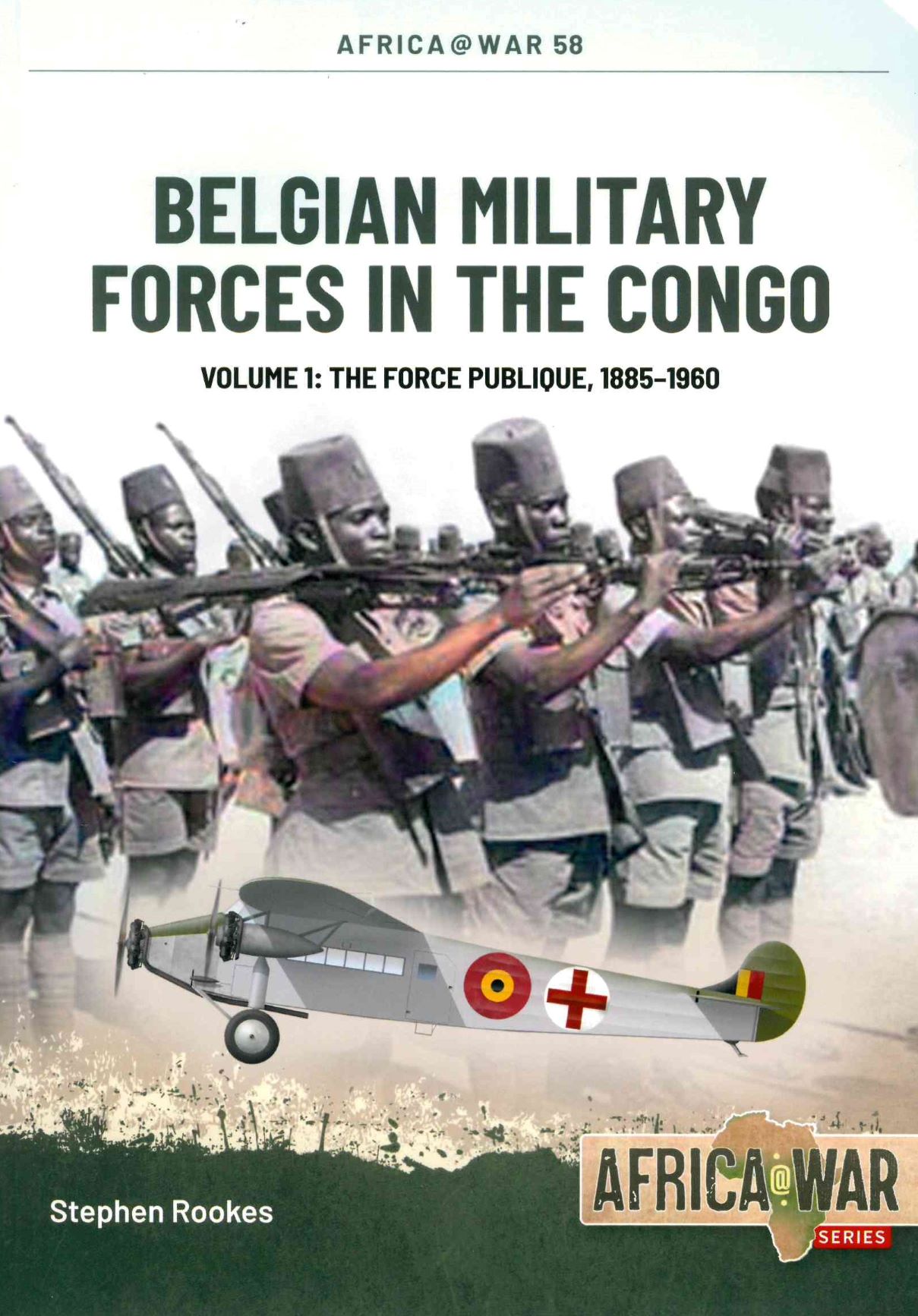Belgian Military Forces in the Congo, Volume 1 – The Force Publique, 1885-1960
The area known as the Congo was first discovered by Prince Henry the Navigator around 1482 as he sailed along the western coast of Africa. Continuing the discovery was Portuguese Navigator Diego Cão who is credited as the first European to see the mouth of the Congo River. Had he sailed up the Congo, he would have seen a diverse and extraordinary landscape described by Author Stephen Rookes,
“Ranging from snow-topped mountains and volcanoes such as the Blue Mountains in the northeast of the Congo, the Eastern Rift Mountains in the Great Lakes region to luxuriant savannas, mosquito-infested swamps and dense rainforests that covered much of the land, Cão would have also discovered up to 15 cultural regions and over 250 different ethnic groups living side-by-side.”
The Democratic Republic of the Congo today is country in Central Africa bordered to the west by the Atlantic Ocean and is the second largest country in Africa. At the time of its “discovery”, it was a vast unknown with unfathomable possibilities. Author Stephen Rookes does an amazing job of outlining the history of European and Arab history in this part of Africa as they each maneuvered to carve their niche from the many tribes already living there. Famous explorers such as Dr Livingston (of “Dr Livingstone, I presume” fame, uttered by another explored Henry Morton Stanley) met in the Congo.
The Belgian monarch King Léopold II lay claim to the Congo in 1885 as part of the European powers carving up Africa. To protect his personal interests, he established the Force Publique (FP), a gendarmerie and paramilitary force, to counter Germany to the east, the British to the south, the French to the north, and against tribal movements and bands of Arab slave and ivory traders. This book is primarily a history of the Force Publique from its inception in 1885 to its dismantling in 1960.
The Force Publique was instrumental in removing the Arab ivory and slave trades, keeping the other countries out of their borders, and played significant roles in both World War I and II (the Belgian Congo wanted to remain neutral in both conflicts, but were drawn in with the Allies in both wars). The interwar period was a period of growth for the Congo, and aviation is covered extensively (pages 45-70). Naval vessels are covered as they played roles along the rivers and lakes.
After World War II, the FP, in addition to its role of safeguarding territorial integrity, was used to maintain public order and quell unrest, to include the use of lethal force to ensure compliance with governmental orders. Civil unrest really came to a boiling point in 1959 when factions divided among many loyalties, tribes, and Pan-African versus colonial rule. Ironically, it would be the FP that would instigate violence and turn on itself.
The Brussels Round Table Conference that began on 3 January 1960 outlined the future of the Belgian Congo to gain autonomy on 30 June 1960. A key sticking point was that Belgium would retain control of its naval and air bases after independence. Within a week of independence, in July 1960, the situation exploded as the FP realized their situation would remain the same – same pay, rank structure and predominantly white officers would remain at their posts.
The situation was exacerbated when the commander of the FP, General Émile Janssens responded to rumors of FP’s future by writing on a chalkboard “Before Independence = After Independence”. Several FP units mutinied, and Belgians were forced to flee for their safety. Belgian military forces were deployed and UN Resolution 143 committed 20,000 peacekeepers to the Congo, including Tunisian, Moroccan, Swedish, Liberian, Irish, Ethiopian, Guinean and Ghanaian troops. Belgian troops left in August 1960 and the FP was replaced by the Armée Nationale Congolaise (ANC), with a former Congolese Sergeant Major, the prominent Congolese politician Victor Richard Lundula, was promoted as the Commander in Chief of the ANC. Unfortunately, the departure of Belgian forces did not bring peace to the Congo as a brutal civil war broke out (that will be covered in Volume 2 of this series).
The book is a fascinating history, complete with extensive photographs from the author’s personal collection, maps, detailed tables, and a color profile section composing the following eight chapters:
- The Force Publique in the Congo Free State: Origins and Structure
- Military Challenges to the Congo Free State
- The Force Publique, 1908-1918
- The Interwar Period: The Development of the Belgian Congo
- The Belgian Congo and the Second World War
- Aviation in the Belgian Congo, 1940-1944
- Trouble Brews in the Belgian Congo
- Belgium’s Military Response to the Civil Disorder in the Congo, 1959-1960
Modelers and historians will enjoy this book with color images and black and white photographs of numerous aircraft from interwar aircraft to T-6s to Potez-Air Fouga CM170-1 Magisters, naval craft, artillery, machine guns and some images of M8 Greyhounds. The photographs from the 1800s are particularly interesting, as are the world wars sections.
Stephen Rookes has provided the Africa@War series a concise, well researched and easy to read book to help fill in gaps in the military history of Central Africa. His love for aircraft is obvious and he works for the French Air Force as a researcher and lecturer at the Centre de Recherche de l’Armée de l’air et de l’espace (CREA) in Salon-de-Provence, France. Now a French national, he was born in England and has six other books in the @War series.
Profuse thanks to Casemate and IPMS/USA for providing the review sample.

















Comments
Add new comment
This site is protected by reCAPTCHA and the Google Privacy Policy and Terms of Service apply.
Similar Reviews